|
Like black, white is an achromatic colour. The word derives from the same roots as the words “bright” and “light”, which describe the colour white. Along with black, white was one of the first colours used in cave paintings. Palaeolithic artists used chalk or calcite to produce white markings. In Ancient Egypt, white was connected with the goddess Isis who, according to myth, resurrected her dead husband. The priestesses of Isis dressed only in white linen and the same material was used to wrap mummies. In Ancient Greece, the colour white represented life and nourishment, particularly concerning a mother’s milk. The Ancient Greeks and other civilisations also saw white as a counterpart to black in terms of light and darkness. In Ancient Roman, Vesta, the goddess of the hearth and family, was said to wear white linen robes. Thus, white became a symbol of purity, loyalty and chastity. White was also worn at ceremonial occasions by Roman citizens between the ages of 14 and 18. A man who wished to be elected to public office wore a white toga known as a toga candida. This is where the word candidate stems from. The early Christian church adopted the Roman concept of white representing purity and virtue. Priests were expected to wear white during mass and it became the colour of the Cistercian Order and the official colour worn by the Pope. Similarly, in the secular world, a white unicorn was used as a symbol of purity, chastity and grace. Legend said, only a virgin could capture a unicorn. Whereas black is the traditional colour of mourning today, before the 16thcentury, widows commonly wore white. Later, in the 18th century, white became a fashionable colour for both men and ladies. White wigs and stockings became a typical part of male dress for the upper classes. Did you know it was once an unwritten rule that all underwear and bed linen must be white? This may have been because these items were washed more than others and, therefore, more likely to fade and wear out. According to science, we see the colour white when an object reflects all light and colour wavelengths. Snow is white because the ice reflects the sunlight. Clouds are white because the water droplets do not absorb any wavelengths. The White Cliffs of Dover are white because they are made of limestone, which reflects lights. White beaches occur when the sand is made up of limestone or quartz particles, from which light is reflected.
There are many interpretations of the meaning and symbolism of the colour white. In Western cultures, white usually represents innocence and purity. It is also associated with beginnings and is the reason why babies and children are usually baptised wearing white. Queen Elizabeth II wears white at the opening of each British Parliament session. Debutantes wear white at their first ball. White has been the traditional colour of wedding dresses since the 19thcentury.
White is a sign of cleanliness. Objects that are expected to be kept clean are typically white, for example, dishes, refrigerators, toilets, sinks, bed linen, towels, doctors’ coats and chefs’ outfits. White can also mean peace or surrender. Originating during the Hundred Years’ War, a white flag is used to request a truce or indicate surrender. In the Bible, white is also a symbol of purity, innocence, honesty and cleanliness; however, there are also other meanings. One repeated representation is illness, particularly in relation to skin disease. When someone is ill, they usually look pale or white, particularly in the hands and face. Verses that refer to this idea include:
The example from Joel talks about plants rather than humans. Joel speaks about a plague of locusts that have destroyed his vines and fig trees, stripping them of their bark. The inner layers of many trees are white; this fact is mentioned in the book of Genesis:
Sometimes, the writers of the Bible have used the colour white to describe something’s appearance. In these cases, they may not contain hidden meanings but rather a way of helping the reader picture the scene:
There are many examples of white being used as a symbol of purity. A couple of these refer to the repentance of sin, for example:
You may remember from previous articles that the gardens of the palace of Susa contained white hangings and, later, Mordecai was clothed in blue and white. These also refer to purity as well as peace.
The remaining examples of the colour white that I have found are all related to prophesy. White horses, for example, symbolise truth and righteousness. The other prophetic uses of the colour likely refer to similar things; however, scholars have debated at length over their exact meaning. If you have the time, you may wish to read up about the following verses on the internet or in books but for now, I will just list them so that you can get a general idea about the prophecies. As you will see, the majority appear in the book of Revelation.
This ends The Importance of Colours in the Bible series. I hope you have enjoyed studying the Bible through colours and learnt something new. For fun, let’s end with phrases and idioms involving the colour white. As always, feel free to add your own examples.
0 Comments
Some may argue that black is not a colour, however, Wikipedia describes it as the darkest colour. It is an achromatic colour, which means it has no colour hue. White and grey are two other achromatic colours. Symbolically, black is used to represent darkness, however, there are several other meanings associated with the colour.
Black was the first colour to be used in cave paintings. Palaeolithic cave paintings produced between 18,000 and 17,000 years ago used charcoal or burnt bones to produce the colour black. In fact, the ancient Latin and Greek words for black also translate as “to burn”. The Ancient Egyptians believed black was the colour of fertility due to the colour of the soil that had once been flooded by the River Nile. The Ancient Greeks, on the other hand, associated black with death and the underworld because they believed the waters of the River Acheron, that separated Hades from the living world, were black. Initially, in Ancient Rome, craftsman and artisans wore the colour black, however, by the second century, the colour had been adopted by Roman magistrates when attending funeral ceremonies. Thus, black became a symbol of death and mourning. By the 12th century, black was the traditional colour of Benedictine monks as a sign of humility and penitence. Yet, two centuries later, the meaning of black changed once again. Due to more expensive processes of producing black dyes, the colour became common amongst the wealthy and signified their importance and position in society. This change spread from Italy to France, eventually reaching England during the reign of Richard II. By the end of the 16thcentury, almost all monarchs and royal courts in Europe wore black. Although black was the colour worn by members of the Catholic clergy, it later became the colour of the Protestant Reformation and the English Puritans. John Calvin amongst other Protestant theologians denounced the richly coloured interiors of Catholic churches, claiming they represented luxury and sin. Ironically, around the same period, the colour became associated with witchcraft and the devil. People feared that the devil would appear at midnight during a ceremony known as Black Mass or Black Sabbath in the form of a goat, dog, wolf or bear, accompanied by black creatures, such as cats or snakes. During the Industrial Revolution, black became associated with the colour of dirt, coal and smog. In literature, it became the colour of melancholy and in politics, the colour of anarchism. In the 20th century, it was adopted by fascism and intellectual and social rebellion. On the other hand, it had an alternative meaning in fashion. Black became the colour of evening dress for men and Coco Chanel popularized the little black dress. The Black Power movement and the slogan “Black is Beautiful” fought for equal rights for African Americans during the 1950s. In the 1990s, the Black Standard became the banner of many Islamic extremists groups. It is also associated with subcultures, such as Goths. Today, the colour black has different meanings all over the world. In China, it represents water, which is one of their five fundamental elements. It also represents the direction north, which is symbolised by a black tortoise. In Japan, black means mystery, the night, the supernatural, the invisible and death. A black belt in Japanese martial arts symbolises experience. In Indonesia, black represents demons, disaster and the left hand. In Islam, Muhammad’s soldiers are said to have carried a black banner, hence, the Black Standard of some Islamic groups. In Hinduism, the goddess of time and change is called Kali, which means “the black one”. According to mythology, she destroys anger and passion. With so many variants on the meaning of the colour black, what does it represent in the Bible? In Christian mythology, black was the colour of the universe before God created light. Occasionally, the devil is known as “the prince of darkness”, a term that was used in John Milton’s Paradise Lost and Shakespeare’s King Lear. Let’s look at some examples from the Bible. The colour black appears less than twenty times in the Bible and, on some of those occasions, the NIV translates the word as “dark” or “darkness”. These Bible verses tend to refer to famines, wars and sorrow. An example of this is Job 30:30: “My skin grows black and peels”. Job is lamenting his fate and refers to “blackness” many times throughout the book; however, it is only in reference to the colour of his skin as a result of lack of nourishment that he uses the word “black”. The colour black also represents the deceitful treatment of Job’s friends, although the NIV quotes “darkness”. Similarly, black or darkness symbolises God’s judgement and punishment of sins. A handful of times, black horses have been used as a symbol of sorrow and famine. In Zechariah 6, there are four chariots pulled by different coloured horses. Each travels in a different direction, the black one going north, i.e. Babylon, where punishment will be given out. Verses involving black horses include:
Another symbol of God’s judgement is the darkening of the sky. Verses include:
Not all references to the colour black have negative connotations. In some instances, black represents good health. Those who have read the previous articles in The Importance of Colours in the Bible series will know that a yellow hair in a wound being inspected by a priest was a sign of uncleanliness or leprosy. A black hair, i.e. a natural coloured hair, on the other hand, gave the afflicted a clean bill of health.
As you know, there are many black animals in the world, including, bears, spiders, snakes, panthers and birds. Two black birds are listed as unclean animals and the Israelites were, therefore, unable to eat:
Another black bird is mentioned in Song of Songs as a simile to describe the hair colour of “the beloved”:
A final mention of black hair occurs during the Sermon on the Mount. Jesus warns people not to break an oath or even make an oath in the first place. “All you need to say is simply ‘Yes’ or ‘No’.” It is wrong to swear things on heaven for it belongs to God. Jesus also instructs people to not swear by their head: Matthew 5:36: And do not swear by your head, for you cannot make even one hair white or black. So, what does black represent in the Bible? Most of the examples I have given relate to sin, judgement and “dark times”. There is no getting away from the fact that black has negative connotations. On the other hand, the other verses show that not all black things are bad. There are naturally occurring black things in the world that have not come about as a result of sin, for example, ravens and hair. We must not be quick to judge something by its colour; we should not be so black and white (pardon the pun) about the world. This way of thinking can debunk many thoughts, ideas and stereotypes about the world, for instance, assumptions about a Goth’s choice of clothing and no one should ever be judged by their skin colour. I could leave this article with that thought-provoking conclusion; however, I have found some expressions and idioms involving the word “black” that you may enjoy. Also, feel free to add your own.
Purple is a secondary colour made by combining red and blue. The word was first used in English in the year 975 AD, although, it was spelt purpul. Many shades get confused as purple, for example, violet and lilac, however, purple has its place on the traditional colour wheel. The confusion arises from the term Tyrian purple, which ranged from crimson to bluish purple. To make things more confusing, each country tends to have a different definition of purple, resulting in a variety of shades. In France, purple is described as “a dark red, inclined toward violet” and in German Purpurrot, meaning “purple-red”. Confusion aside, it is generally agreed that the colour purple is the colour of kings, nobles, priests and magistrates. This idea formed as early as 950 BC and it is believed the kings of Ptolemaic Egypt wore purple as did Alexander the Great. The Roman custom of wearing purple togas may have stemmed from this or may have been introduced by the Etruscans. An Etruscan tomb painting from the 4th century BC shows a nobleman wearing deep purple. The Byzantine Empire continued to use purple as the imperial colour. In Western Europe, Charles the Great, also known as Charlemagne, was buried in a purple shroud. After the fall of Constantinople to the Ottoman Empire, however, the colour lost its imperial status and was replaced with scarlet. Throughout the medieval and Renaissance eras, purple was phased out of royal clothing and cardinals were no longer allowed to wear the colour on the orders of Pope Paul II. On the other hand, purple robes became the standard among students of divinity. The colour purple regained its popularity during the 18thand 19thcenturies. Paintings of Catherine the Great show her wearing a light purple dress, although, some may call this mauve. Queen Victoria wore a gown of a similar colour to the Royal Exhibition of 1862, which encouraged factories to start producing purple dyes, making them readily available to everyone and not just royalty. Purple became a popular choice of colour amongst Pre-Raphaelite artists and it was said to be the favourite colour of the Austrian painter Gustav Klimt. George VI wore purple for his official portrait and his daughter, Elizabeth II, used the colour on the invitations to her coronation.
There are several “Purple Mountains” around the world, some of which are so named due to the colour of the rock and others because of the shade the clouds form at dawn and dusk. These mountains can be found in Nanjing (China), Ireland, Wyoming, Alaska, Oregon, Washington and Colorado.
Although the colour purple had been phased out of imperial families, the British Royal Family continues to use the colour on ceremonial and special occasions. In Roman Catholic Liturgy, purple symbolises penitence and priests may wear a purple stole when they hear a confession. They also wear a purple stole or chasuble during the periods of Lent and Advent. In other traditions, purple is associated with vanity and extravagance. This is because it is a colour that easily attracts attention. It is a colour associated with the artificial and unconventional due to the infrequency of its appearance in nature. It was also the first colour to be synthesised. In the past, purple was a sign of mourning in Britain. The first year after a death, mourners traditionally wore black and in the second year, they wore purple. This may have stopped being common practice after Queen Victoria decided to wear black for the rest of her widowhood. In China, the colour purple represents awareness, physical and mental wellbeing, strength, and abundance. In some cases, it also symbolises luck. In Japan, it is the colour of wealth and privilege. On the Thai solar calendar, it is associated with Saturday. Grieving widows in Thailand wear purple as a sign of mourning. The colour purple is also significant in the Bible. Those who have read my article about the colour blue will already know that purple is an important colour. It appears roughly thirty times in the book of Exodus when describing the decoration of the tabernacle. The Israelites were instructed to make several curtains “twenty cubits long, of blue, purple and scarlet yarn and finely twisted linen.” (Exodus 27:16) I will not regurgitate everything I have already written but these instructions prove that the colour purple has a principal connection with God. Later, in the book of Numbers, the Kohathite tribe are instructed to “remove the ashes from the bronze altar and spread a purple cloth over it” (Numbers 4:13) every time the tabernacle is moved. As we have also seen when looking at the colour blue, purple appears in the books of Esther and Jeremiah. The garden of the palace of Susa was decorated with blue linen and cords of white and purple. (Esther 1:6) When King Xerxes awarded Mordecai after the death of Haman, Mordecai was dressed in royal garments of blue and a purple robe of fine linen. (Esther 8:15) In Jeremiah, we are told that people had started to dress in blue and purple, believing themselves to be as important as God, however, God put them back in their place. Let’s have a look at some other examples of the colour purple in the Bible. In the book of Judges, we are told that purple garments are the clothing of kings. In the book of Daniel, King Belshazzar announces that whoever interprets the strange writing on the wall will be awarded with purple clothing.
In the epilogue of Proverbs 31, we are told about the wife of a noble character. The chapter tells us she is worth more than rubies and should be honoured. She provides for her husband and looks after her household. She makes sure there is always something for her family to eat but, most importantly for us, “she is clothed in fine linen and purple,” (Proverbs 31:22) a noble, respected colour. On the other hand, the poem in Lamentations 4 reveals that wearing purple does not equate to godly status. The colour does not protect people from God’s wrath or entitle them to sin without punishment. “Those brought up in royal purple now lie on ash heaps.” (Lamentations 4:5) These self-important people, clothed in royal colours, have become the victims of God’s anger. The most noteworthy use of purple occurs in two of the Gospels, Mark and John. Although purple is a royal colour, it is used negatively in these books. We all know after Jesus was arrested he was crowned with thorns and mocked for being the “King of the Jews.” What is often missed out of this story, however, is the purple robe they also dress him in.
Purple is also mentioned in the Gospel of Luke, however, not in relation to Jesus’ arrest and crucifixion.
There are four more mentions of the colour purple in the Bible. They each indicate someone’s wealth and status, however only one has positive connotations:
Overall, the colour purple is important and symbolic of God. Although bad things happened to some people who wore purple, it is not the colour that was the cause but rather their actions. Purple is a colour that represents royalty, wealth and nobility, but unless we put God first, it does not matter what we wear. As I did for the colour blue, I am finishing this article with a handful of phrases and idioms involving the colour purple. Feel free to add your own.
Blue is the third primary colour along with red and yellow. The word comes from the Middle English bleu, which means shimmering or lustrous. Of the colours on the visible spectrum of light, blue has one of the shortest wavelengths. As a result, when sunlight passes through our atmosphere the blue waves are scattered more widely than other colours, therefore, the sky appears blue. It would take a scientist to explain this theory but, as Einstein said it was true, we can accept it as thus.
Apart from naturally occurring blues, blue was not used in art or referenced in literature until much later than the other colours. This is because it was much harder to produce a blue dye and the minerals from which it was made were much more expensive, for example, indigo, lapis lazuli and azurite. No ancient cave paintings contain the blue pigment; one of the earliest uses is thought to be on the funeral mask of King Tutankhamen (1323 BC). The Ancient Egyptians associated the colour blue with the sky and divinity. They believed the god Amun could turn his skin blue to fly, invisible, across the sky. They also believed blue could protect against evil, which is why many people in the Mediterranean to this date wear blue amulets to protect them from misfortune. The Romans often used blue for decorations. The walls of Pompeii were reportedly decorated with frescoes of blue skies. Later, in the Byzantine era, blue was often used in churches and the Virgin Mary was usually depicted in dark blue clothing in artwork. In Islam, blue is said to be Muhammad’s favourite colour. In the Middle Ages, blue became the colour of poor people who used poor-quality dyes made from the woad plant to colour their clothes. In the western world, blue did not appear in churches until the 1130s when Saint-Denis Basilica installed a cobalt coloured stained glass window. This colour became known as bleu de Saint-Denis. Although the Byzantine Empire had depicted Mary in blue, the western church did not take up this practice until the 12thcentury. Before that, the Virgin was shown wearing black, greys and greens. King Louis IX of France, now known as Saint Louis, was the first king to dress in blue. After this, many nobles followed suit. As a result, paintings of the legendary King Arthur began to show him dressed in blue. In the years to follow, blue became a sign of the wealthy and powerful in Europe. During the Renaissance, merchants devised a way to produce blue dyes more cheaply. This led to several blue dye industries being set up in cities across Europe. Eventually, blue pigments became widely available and the colour began to appear regularly in paintings. By the 18thand 19thcenturies, blue had become a popular colour amongst artists, particularly impressionists. In contemporary English, blue is used to represent sadness, for example, “She was feeling blue.” Alternatively, blue can represent happiness or optimism, for instance, blue skies. On the other hand, in German, to be blue means to be drunk. Also, in German, a naïve person is said to look upon the world with a blue eye. In Turkey and some parts of Asia, blue represents mourning. In China, blue is the colour of ghosts, torment and death. It is common in Chinese opera for the villain to wear blue face paint. In Thailand, however, the colour blue represents Friday. Although some societies are trying to eradicate gender stereotypes, it is common to associate blue with boys and pink with girls. Before the 1900s, however, it was the other way around. Blue was the colour for girls because it corresponded with the blue of the Virgin Mary’s clothes. Boys were pink due to its closeness to the colour red, a masculine colour. Many countries throughout the world use the colour blue on their flags. Countries include Scotland, Finland, Greece, Israel, Argentina, Uruguay, Estonia, Romania, Barbados, Russia, Serbia, Norway, Iceland, New Zealand, Thailand and the United Kingdom. In politics, blue represents the Conservative Party in the UK and the Democratic Party in the USA. In Christianity, blue is mostly associated with the Virgin Mary, although there is no evidence she wore this colour in the Bible. In Hinduism, many of the gods have blue skin, including Vishnu, the preserver of the world. In the Bible, the colour blue is mentioned several times, however, it appears most in verses related to the Tabernacle. In Judaism, the colour blue is said to represent God’s glory. The colour blue first appears in Exodus 25:4 in which the Lord asks Moses to tell the Israelites to give him a gift of gold, silver and bronze; “blue, purple and scarlet yarn and fine linen; goat hair,” rams skins and so on. After this, between chapters 26 and 39, there are a further 33 mentions of the colour blue. I will not bore you by listing every verse; instead, I will supply a brief overview. Exodus 26 contains God’s instructions for the construction of the tabernacle. In the very first verse, He requests ten linen curtains made from blue, purple and scarlet yarn, which have loops of blue material along the bottom (verse 4). Another curtain containing blue yarn is instructed in verse 31 and one more for the entrance to the tent in verse 36. Exodus 27 continues God’s instructions for the tabernacle. The entrance to the courtyard of the tabernacle required “a curtain twenty cubits long, of blue, purple and scarlet yarn and finely twisted linen.” (verse 16) Exodus 28 records God’s wishes for the priestly garments. These include a breastpiece, an ephod, a robe, a tunic and a sash, all made from gold, and blue, purple and scarlet yarn. The breastpiece and ephod were to be tied together with a blue cord and the robe was made entirely from blue cloth but decorated with balls of blue, purple and scarlet yarn. A blue cord attached a seal onto the priest’s turban, which read, “Holy to the Lord”. Exodus 35 requests the Israelites to donate gold, silver and bronze, and blue, purple and scarlet yarn and fine linen for the construction of the Tabernacle. The actual building of the tabernacle commences in chapter 36. The Lord chose Bezalel son of Uri the task of constructing the gold, silver and bronze elements, and Oholiab son of Ahisamak the ability to teach others to work with the yarn and linen. The chapter goes on to record the production of the curtains mentioned earlier in the book. Next, Exodus 38 records the construction of the courtyard, complete with a blue, purple and scarlet curtain for the entrance. Finally, Exodus 39 explains how the Israelites made the priestly garments. The chapters are all rather repetitive, however, it emphasises the importance of the colour blue, as well as purple and scarlet. Blue continues to be important to the Israelites in the Book of Numbers. Chapter four records God’s instruction to Moses and Aaron to take a census of all the Levite clans. The Kohathite clan is responsible for covering the tabernacle curtain with a “durable leather” and to “spread a cloth of solid blue over that and put the poles in place.” (verse 6). They are also instructed to lay a blue cloth over plates dishes and bowls, the lampstand, gold altar and any articles used for ministering in the sanctuary. Finally, we move away from the tabernacle when we reach Numbers 15:38: “Speak to the Israelites and say to them: ‘Throughout the generations to come you are to make tassels on the corners of your garments, with a blue cord on each tassel.’” The tassels, or tzitzit, are still worn by orthodox Jews today. There have been several opinions about the significance of this blue cord (tekhelet), including it represents the noonday sky and it is the colour of God’s glory. The next mention of the colour blue occurs in 2 Chronicles. A large part of the book focuses on the construction of Solomon’s Temple. 2 Chronicles 2:7 states, “Send me, therefore, a man skilled to work in gold and silver, bronze and iron, and in purple, crimson and blue yarn, and experienced in the art of engraving, to work in Judah and Jerusalem with my skilled workers, whom my father David provided.” These are the same colours (except crimson instead of scarlet) as used for the tabernacle. A man named Huram-Abi was sent to work on the Temple by Hiram. He was “trained to work in gold and silver, bronze and iron, stone and wood, and with purple and blue and crimson yarn and fine linen.” (verse 14) In the following chapter, a curtain of blue, purple and crimson yarn is recorded. The next book of the Bible to feature the colour blue is Esther. Chapter one, which focuses on the deposition of Queen Vashti, also describes the citadel of Susa. Verse 6 tells us“The garden had hangings of white and blue linen, fastened with cords of white linen and purple material to silver rings on marble pillars. There were couches of gold and silver on a mosaic pavement of porphyry, marble, mother-of-pearl and other costly stones.” As you know, the book of Esther contains the story of Haman, the enemy of the Jews. By chapter 8, he has been defeated and King Xerxes gives Queen Esther Haman’s estate. Mordecai was also awarded by the king and “When Mordecai left the king’s presence, he was wearing royal garments of blue and white, a large crown of gold and a purple robe of fine linen. And the city of Susa held a joyous celebration.” (Esther 8:15) The book of Jeremiah mentions the colour once. On this occasion, the blue does not reference God as it may have done in the curtains of the tabernacle. Instead, in chapter ten, God warns the Israelites of the dangers of false gods and idols. He reports that skilled workers hammer gold and silver, then “What the craftsman and goldsmith have made is then dressed in blue and purple”. (Jeremiah 10:9) God goes on to tell them that he is the true God and any other god or idol will perish. Ezekiel 23 talks about Assyrian warriors “clothed in blue, governors and commanders, all of them handsome young men, and mounted horsemen.” (verse 6) In this instance, the colour blue has moved away from representing God’s glory and become an indication of importance – similar, in a way, to Mordecai’s garments in the book of Esther. Ezekiel 27, however, reveals that clothing yourself in blue fabric does not give you the same status as God. In a lament, God reminds the people of Tyre that “Fine embroidered linen from Egypt was your sail and served as your banner; your awnings were of blue and purple from the coasts of Elishah.” (verse 7) Yet, Tyre has now fallen. “In your marketplace they traded with you beautiful garments, blue fabric, embroidered work and multicoloured rugs with cords twisted and tightly knotted.” (verse 24) Still, Tyre was destroyed. This leaves us with one final mention of the colour blue:
With the exception of the latter, all fifty-odd references to the colour blue relate to God, the service to God and godly living. The building of the tabernacle and construction of the temple occurred at a time when blue dyes were harder to come across, therefore, they were only used for something special; and what is more special than God? As time went on, people began to use the colour blue to signify their rank and importance, however, God put them back in their place. With this meaning in mind, it is clear why artists chose to use the colour blue for Mary’s clothing in the Nativity Scene. She was chosen by God to be the mother of his son and is, therefore, important in his eyes. Today, the colour blue has lost this sacredness. No one looks at blue paint, blue curtains, blue books or a blue football shirt and thinks of God. Fortunately, unlike the people of Tyre, we are not attempting to elevate ourselves to God’s level by using this colour. We use it because it is now readily available. To finish this article, I have found a list of phrases that involve the colour blue. Some you may already know, some you may not, and others may make you laugh. Enjoy.
When I chose to use only the NIV Bible for The Importance of Colours in the Bibleseries, I did not realise how helpful it would be in terms of reducing the amount of Bible verses to sort through. Combining all versions of the Bible, there are almost ninety mentions of the colour green, however, only half of them appear in the NIV. The translator of the NIV decided that the word “pasture” was as good as “green field”, and it was not necessary to write “green trees” when “trees” would suffice. So, hats off to the NIV scholars for making this article a little easier for me! The colour green is between yellow and blue on the visible spectrum. It is a secondary colour that can be produced by mixing two primary colours – blue and yellow. The word “green” comes from the old English word grene, which has the same root as the words “grass” and “grow”. The majority of green we see in the world comes from nature, such as grass, trees, vegetation and so forth. Green is common in plants because they contain a chemical called chlorophyll, which gives them this colour. Many fish, birds and reptiles are also green and use the chlorophyll green of their surrounding environment as a means of camouflage. Green creatures include frogs, parrots, snakes and the green huntsman spider. In Ancient Egypt, the colour green was associated with regeneration and rebirth; however, it was rarely used in their artworks. The Romans, on the other hand, connected the colour green with Venus, the goddess of gardens, vegetables and vineyards, amongst other things. As a result, a green earthy pigment was often used in their artworks. By the second century AD, the Romans had at least ten different words for varieties of greens.
Green can be used as a symbol for a variety of things. In terms of traffic and safety, green grants permission and announces that it is safe to proceed. In most countries, the colour is also associated with nature, health, life, springtime, freshness and hope. It has been adopted by organisations, such as Greenpeace and the Green Party, as a result of this. Bins specifically for garden waste are green and areas in cities designated as a garden or park are often referred to as green areas.
In China, green is associated with the east and sunrise as well as life and growth. In Thailand, however, they connect the colour with something a little more obscure: a child born on a Wednesday. Many places relate green with youth; for instance, an inexperienced person may be called green. Underripe fruit are usually green. Surveys undertaken around the world reveal that people mostly think of calmness, nature and freshness when confronted with the word green. Other suggestions, however, are less positive, for example, jealousy and envy. It is believed that William Shakespeare was the first person to use the term “green-eyed monster” in his play Othello in reference to jealousy. Other phrases that include the word green are:
The colour green has a few significances in religion. According to Islamic tradition, the robes and banner of Muhammad were green. Al-Khidr, who supposedly met and travelled with Moses, was also known as The Green One. In Christianity, clergy may wear green during “ordinary time”, i.e. a Sunday that does not fall within a particular holiday or festival season. In Eastern Catholic Churches, green is usually the colour of Pentecost. Many associate green with Christmas, for instance, Christmas trees and holly leaves. Interestingly, in Scotland and Ireland, green is used to represent Catholics. This is shown on the Irish flag with orange representing Protestants. In the Bible, there does not appear to be any particular meaning connected to the use of the word “green”. It is used mostly to describe the colour of grass, trees or plants.
The greenness of nature is seen as a positive thing but many verses in the Bible talk about the lack of green. Exodus 10:15 talks about the result of the plague of locusts sent by God to the land of Egypt: “They covered all the ground until it was black. They devoured all that was left after the hail—everything growing in the fields and the fruit on the trees. Nothing green remained on tree or plant in all the land of Egypt.” In Job 39:8, God speaks to Job about the animals he created. God tells him he gave the donkey the salt flats as its natural habit where “It ranges the hills for its pastureand searches for any green thing.” Isaiah 15 records a prophecy against Moab. As a punishment, the land will be ruined, destroyed overnight. Verse 6 states, “The waters of Nimrim are dried upand the grass is withered; the vegetation is gone and nothing green is left.” God reminds Ezekiel of His powers in Ezekiel 17:24: “All the trees of the forest will know that I the Lord bring down the tall tree and make the low tree grow tall. I dry up the green tree and make the dry tree flourish. I the Lord have spoken, and I will do it.” Later, in chapter 20, God speaks via Ezekiel, revealing a prophecy against the South. Verse 47 says, “Say to the southern forest: Hear the word of the Lord. This is what the Sovereign Lord says: I am about to set fire to you, and it will consume all your trees, both green and dry. The blazing flame will not be quenched, and every face from south to north will be scorched by it.” Of course, the best place to find verses about destruction is in the book of Revelation. In the NIV, the word green only appears once in the book, however, it is concerning the end of the world, thus a distinct lack of green. Revelation 8:7: “The first angel sounded his trumpet, and there came hail and fire mixed with blood, and it was hurled down on the earth. A third of the earth was burned up, a third of the trees were burned up, and all the green grass was burned up.” In the Gospel of Luke, there is one example of a positive connotation of the colour green used in a negative context. This occurs shortly before the crucifixion of Jesus when he tells the “Daughters of Jerusalem” not to weep for him but their children, predicting devastating times in the future. He ends this short speech with the line: “For if people do these things when the tree is green, what will happen when it is dry?” (Luke 23:31) The green tree in this riddle refers to Jesus himself, the Son of God, the one who came to Earth to save. If people are doing wicked things while he is alive, what will they do once he is dead? Green plants are often used as an analogy in the Bible. Most commonly, it describes people or entire societies. In some instance, the metaphor talks about people flourishing or bouncing back after a disaster. On the other hand, some refer to the destruction of communities as a result of punishments for their sins.
And that ends the examples of the word green in the NIV. There are of course many more in other versions of the Bible, however, they tend to refer to the colour of plants, grass or fields rather than anything of more significance. To finish, just for fun, let’s think of as many things that are green in today’s world, not including those already mentioned. I will start you off:
My initial idea for The Importance of Colours in the Bible was to go through each colour of the rainbow in turn. This was slightly foiled by red, which was divided into red, crimson and scarlet, but never mind. So, orange was next on my list but, lo and behold, there is no mention of the word orange in the Bible! The closest I could find in the NIV was Revelation 21:20, which states: “the fifth onyx, the sixth ruby, the seventh chrysolite, the eighth beryl, the ninth topaz, the tenth turquoise, the eleventh jacinth, and the twelfth amethyst.” According to the AUV Bible (An Understandable Bible), [sard]onyx is “an orange-coloured stone similar to chalcedony”.
The meaning of yellow in artwork changed sometime in the centuries following the crucifixion of Jesus. In paintings of Jesus’ disciples, Judas Iscariot is usually depicted wearing yellow, thus the colour has become associated with betrayal, envy, jealousy and greed. From this, the tradition of depicting Jews or other non-Christians in yellow began. Whilst this practice fell out of use, it was briefly reinstated during the 20th-century when Jews living in German-occupied countries were required to wear a yellow badge featuring the Star of David.
In China, the colour yellow represents happiness and wisdom. The first Chinese emperor was known as the Yellow Emperor and all subsequent emperors were considered to be a child of heaven. Only the emperor was allowed to wear yellow and, instead of a red carpet, distinguished guests were honoured with a yellow carpet. In politics, yellow is most associated with liberalism. In the UK, the Liberal Democrats, UKIP, and SNP all use yellow in their campaign materials. In the US, the Libertarian Party is recognised by the colour yellow. In Chinese history, a Daoist sect was known as the Yellow Turbans; they staged a rebellion against the Han Dynasty. Yellow has been and continues to be used to represent optimism and pleasure. It is a colour that is used to attract attention. In fact, yellow is the most visible colour from a distance and many countries have used the colour on their emergency vehicles. The RAF rescue helicopter is yellow, as are the vehicles used by the Royal Danish Air Force. The colour is frequently used as a warning, for instance, yellow (amber) traffic lights mean slow down and a yellow card in a game of football is a caution but not expulsion. The colour yellow is prevalent on national flags across the world. In fact, the flags of three of the five most populous countries feature yellow: China, India and Brazil. Other countries include Germany, Bhutan, Ukraine, Belgium, Lithuania, Spain, Colombia, Brunei, Vietnam, Malaysia, Mozambique, Romania, Sweden, the Vatican, the Philippines, Chad and the European Union. Buddhist and Hindu monks usually wear yellow or saffron robes. The Hindu divinity Krishna was often portrayed in yellow, as is Lord Ganesha. In Islam, yellow is used as a symbol of wisdom. In the various religions of the islands of Polynesia, yellow is a sacred colour associated with the food of the gods. As already mentioned, in Christianity, yellow is both positive and negative. The latter is connected to Judas Iscariot and the positive is in relation to gold. Similarly, there are both negative and positive connotations of the colour yellow in the Bible. Generally, the colour yellow is used to describe two things; one is gold or something valuable, the other is leprosy. In Leviticus 13, God gives Moses and Aaron regulations about diagnosing skin diseases, i.e. leprosy. This was the job of the priest, in this case Aaron, who must examine all suspected cases of disease and determine whether they are unclean.
To find examples of yellow being used to represent gold or valuable objects, you have to compare the NIV with other versions of the Bible. Take Psalm 68:13, for example; the NIV says: “Even while you sleep among the sheep pens, the wings of my dove are sheathed with silver, its feathers with shining gold.” The King James Version, on the other hand, says: “Though ye have lien among the pots, yet shall ye be as the wings of a dove covered with silver, and her feathers with yellow gold.” Often, the word yellow is not used at all, however, yellow objects or items are named instead. Frankincense is an off-yellow colour and is mentioned approximately 25 times in the Bible. In Matthew 2:11, we are told one of the gifts Jesus received from the magi was Frankincense. Many precious jewels are referenced throughout scripture. Chrysolite, a yellow gemstone, is mentioned ten times. In the book of Revelation, chapter 21 tells us about the New Jerusalem. The city’s walls are made of jasper and the city itself from pure gold. There are to be twelve foundations, each one a different gemstone. It is here that chrysolite gets mentioned for the tenth and final time. “The foundations of the city walls were decorated with every kind of precious stone. The first foundation was jasper, the second sapphire, the third agate, the fourth emerald,the fifth onyx, the sixth ruby, the seventh chrysolite, the eighth beryl, the ninth topaz, the tenth turquoise, the eleventh jacinth, and the twelfth amethyst.” (Revelation 21:19-20, NIV) The book of Revelation also contains one mention (in the NIV) of the word yellow. This occurs in chapter nine in which John writes about the riders of the apocalypse. Verse seventeen describes the breastplates of the riders, which were “fiery red, dark blue, and yellow as sulphur”. Sulphur is mentioned elsewhere in the Bible, although without the colour yellow attached. As well as Revelation, the yellow chemical element is written about in the books of Job, Isaiah and Luke. In each of these cases, sulphur is an indication of destruction, thus giving the colour yellow another negative connotation. Yellow is a difficult colour to attach meaning to due to its connection with both positive and negative things. In terms of emotion, however, yellow is generally considered a happy, optimistic colour. Chris Martin, the lead singer from the band Coldplay, said the band wrote the song “Yellow” to reflect “the mood of the band. Brightness and hope and devotion.” So, I leave you with their famous lyrics: “Look at the stars/Look how they shine for you/And everything you do/Yeah they were all yellow.” The New International Version of the Bible frequently uses the words “crimson” and “scarlet” when other newer versions may simply use “red”. In the original Hebrew text, there were even more ways of describing a reddish hue. Three of these words have been translated as “crimson”. They are karmity, which means deep red; tola, the maggot from which the dye is derived; and shaniy. The term “scarlet” is a translation of the Greek word Kokkinos, which refers to the shape of the insect that dye is extracted from. Crimson is a strong red colour that slightly inclines towards purple on the colour wheel. The colour was originally produced using the dried bodies of the kermes insect, which could be found in Mediterranean countries.
The plant rhubarb has been poetically referred to as “crimson stalks” for obvious reasons. The crimson sunbird is the national bird of Singapore. In Australia, there is a species of parrot known as the crimson rosella. Occasionally, in places such as Mexico and Florida, a crimson tide occurs when certain algae turn the water red.
In some religions, such as the Bahá’í Faith, crimson stands for tests and sacrifice. Let’s have a look at where it appears in the Bible. The Second Book of Chronicles, chapter two tells us about King Solomon’s plans to build a temple in Jerusalem. He requested the help of King Hiram of Tyre, with whom he wished to continue the friendly relationship King David had established. The people of Tyre were known for their dyeing industry, particularly for using crimson and purple dyes. Solomon requested Hiram to send him a man who could assist with the decoration of the temple.
There are only two other mentions of the word “crimson” in the NIV Bible and they can both be found in the book of Isaiah. In chapter 63, Isaiah writes about God’s day of vengeance and redemption. The first verse says: “Who is this coming from Edom, from Bozrah, with his garments stained crimson? Who is this, robed in splendour, striding forward in the greatness of his strength? ‘It is I, proclaiming victory, mighty to save.’” In this verse, crimson is a sign of splendour and of victory, however, in an earlier chapter, crimson means something entirely different. It is also an example that distinguishes crimson and scarlet as two separate colours – some theologians argue that they are one and the same.
This leads me on to investigating the use of “scarlet” in the Bible. Scarlet lies somewhere between red and orange on the colour wheel, making it less strong than crimson. Nonetheless, the same insects originally produced the scarlet dye. Synthetic scarlet is often called cadmium red and was the standard red of many artists during the 19thand 20thcenturies. In the 20thcentury, scarlet became associated with revolution. It has been used on revolutionary emblems as a symbol of the blood of martyrs in the French Revolution. It also became the colour of communism, which was used on the Soviet Union’s flag and is still used on the Chinese flag. In China, red is also a symbol of happiness. Scarlet is the colour of the traditional academic dress of doctorate students in the United Kingdom. The Foot Guards and Life Guards also wear scarlet for ceremonial purposes. Army regiments across the world use the colour scarlet on their uniforms too. The countries that do this include Australia, Jamaica, New Zealand, Fiji, Canada, Kenya, India, Singapore, Sri Lanka, Pakistan, Brazil and the USA. In the Roman Catholic Church, scarlet symbolises the blood of Christ and Christian martyrs. In Lutheran tradition, scarlet is used in decorations from Palm Sunday until Maundy Thursday. Other Christians, however, often associate scarlet with prostitution. This is partly due to the description of an adulterous woman in the Book of Revelations, who is sometimes referred to as the Great Scarlet Whore.
Other negative connotations of scarlet in the book of Revelation include:
The first time the word “scarlet” is used in the NIV is in Genesis 38 when Tamar gave birth to twins. A scarlet thread was tied around the wrist of the eldest so that they could differentiate between the two.
The colour is most frequently used in the book of Exodus in relation to the construction of the Tabernacle. This connects scarlet with God, giving it an entirely different meaning in comparison to the final book of the New Testament. Between Exodus 25 and Exodus 39, the colour scarlet is mentioned over 25 times. Examples include:
Leviticus 14 mentions scarlet yarn at least five times in the instructions for the cleansing of defiling skin diseases:
Twice, scarlet is mentioned in the book of Numbers:
Potentially the most famous mention of scarlet in the Bible occurs during the story of Rahab and the Spies. This is found in the second chapter of the book of Joshua. Rahab was a prostitute but in this story, the colour scarlet is not a reflection on her occupation. Rahab helped Joshua’s spies escape and in return, they told her to tie a scarlet cord in her window so that when Joshua’s soldiers attack the city, she will be spared.
Other mentions of the colour scarlet in the Bible are:
Generally, scarlet is a colour associated with wealth and opulence. This meaning is supported with the only mention of the colour in the Gospels:
Despite the unfortunate connection to prostitution, both crimson and scarlet are most representative of wealth and power, both politically and religiously. Even the verses in Revelation refer to this. By the end of times, people were worshipping their wealth and power rather than God. According to surveys across Europe and the UK, scarlet is also associated with courage, force, passion and joy. Combining this with Biblical meaning, it can be ascertained that scarlet is a powerful, positive colour – crimson, too. Following on from The Importance of Numbers in the Bible Series, I thought it would be interesting to look at colours in the Bible. How often are colours mentioned and do they have a particular meaning in scripture? We know that a rainbow of colours was symbolic; in Genesis 9:13, a rainbow was used as a symbol of God’s promise that he would never flood the earth again. In Ezekiel 1:27, a rainbow represented the glory of God. Revelation 4:3 records John’s witness of the same rainbow as Ezekiel but he also saw one above the head of a “mighty angel” who carried a book about the events to occur at the end of time. Our modern understanding of a rainbow was established by Isaac Newton, who divided up the different wavelengths of light (colours) that we are able to see into seven groups. These are red, orange, yellow, green, blue, indigo and violet. I will begin by looking at the first of these colours, however, as you will see, there is a whole continuum of colours that fall in-between. Red is one of the three primary colours (the others are yellow and blue) and can be found on 75% of national flags around the world. In contemporary times, red is associated with a number of different things. Red, when seen on a traffic light or road sign, means “stop”. It is one of the colours used to describe fire, which can have both positive and negative connotations. Fire brings warmth and a means of cooking but, on the other hand, it can also signify danger. In astronomy, Mars is known as the Red Planet and on Jupiter, there is a Great Red Spot. There are stars known as red giants, red supergiants and red dwarfs. The sky occasionally turns red during sunset or sunrise. This has led to the saying, “Red sky at night, shepherd’s delight; red sky in the morning, shepherd’s warning.” It was believed a red sky signified an approaching storm. The original phrase, however, comes from the Gospel of Matthew:
Human blood is red, which can symbolise both life (i.e. we need blood in order to live) or death (in terms of blood being spilt). Two per cent of the world’s population has naturally red hair. The term redhead, or redd hede as it was originally spelt, has been in use since around 1510.
In human and animal behaviour, red sometimes indicates dominance. Wearing the colour red has been linked with success and enhanced performance, especially in sport. A more controlled test of this theory has suggested this is not entirely true. Other meanings that the colour red connotes are love (i.e. red roses on Valentine’s day), celebration and ceremony (red carpet), Christmas (Santa Claus), anger (“seeing red”), seduction (red lipstick) and sexuality (red-light district). In the Bible, the word “red” appears at least fifty times. I am going to use the New International Version because some translations use “red” more broadly. As I mentioned before, there is a wide spectrum of colours and red is only one small section. Either side of red on the spectrum are similar colours, such as, scarlet and crimson, which have their own mentions and meanings in the Bible – at least in the NIV. On more than one occasion, the colour red is used symbolically as an indication of sin or sinfulness. When Israel attacked the wicked Moabites, the “water looked red – like blood.” (2 Kings 3:22) When the city of Nineveh fell, Nahum tells us “The shields of the soldiers are red.” (Nahum 2:3). Ezekiel writes about a prostitute and, therefore, a sinner who lusted after a group of men of whom a sketch had been drawn on a wall in red. “But she carried her prostitution still further. She saw men portrayed on a wall, figures of Chaldeansportrayed in red.” (Ezekiel 23:14) An interesting thing to note here is the colour red was the first pigment to be used in art. In this instance, it may be a coincidence that the drawing was in the same colour as one that represents sin. In Zechariah 1, the prophet is told that the Lord was very angry with his ancestors. Later on that day, Zechariah had a vision: “During the night I had a vision, and there before me was a man mounted on a red horse. He was standing among the myrtle trees in a ravine. Behind him were red, brown and white horses.” (Zechariah 1:8) The prophet records a vision of red horses again in Zechariah 6:2. Another red horse is mentioned in Revelation 6:4 as a sign war, bloodshed and the end times: “Then another horse came out, a fiery red one. Its rider was given power to take peace from the earth and to make people kill each other. To him was given a large sword.” A red dragon is used as a similar symbol but also represents Satan’s power and determination to bring about destruction: “Then another sign appeared in heaven: an enormous red dragon with seven heads and ten horns and seven crowns on its heads.” (Revelation 12:13) Other mentions of the red in relation to the end times are:
Proverbs 23:31 says, “Do not gaze at wine when it is red, when it sparkles in the cup, when it goes down smoothly!” This is a warning about the temptation of sin. It may look good but it will have its repercussions. In the book of Job, the colour red is a sign of sorrow, grief and distress. “My face is red with weeping,dark shadows ring my eyes.” (Job 16:16) Red is also a symbol of death. The Red Sea, which lies between Africa and Asia on the edge of the Indian Ocean, has claimed many people’s lives. In the present day, the Red Sea is bordered by Egypt, Sudan, Eritrea, Djibouti, Saudi Arabia and Yemen. It is approximately 1400 miles in length and about 220 miles wide. The most famous Bible passage involving the Red Sea takes place in the book of Exodus. Moses rescued the Israelites from Egypt by parting the waters of the Red Sea. When Pharaoh and his army tried to cross, God caused the waters to return to normal, drowning the entire army.
On a couple of occasions, Biblical characters are given names that mean “red”.
At least three verses of the Bible mention items being dyed or decorated red. The significance of this, if there is one, is uncertain.
These have been the main examples of the colour red I have found in the Bible. There are plenty of mentions in the NIV of crimson and scarlet but I will look into them later. To finish, looking into the importance of the colour red, I have researched what the colour represents in Christianity today. In the Roman Catholic Church, the colour red is associated with the fire of Pentecost and the Holy Spirit. It has also been the colour worn by Cardinals since 1295. In general, red is the colour of Christ’s blood and, therefore, a symbol of his crucifixion. At Christmas, red tape or ribbon is used during Christingle services to represent the blood. The flags of some historically Christian nations still bear a red cross. If you have anything you would like to add about the link between the colour red and the Bible, let us know. We value your thoughts. |
©Copyright
We are happy for you to use any material found here, however, please acknowledge the source: www.gantshillurc.co.uk AuthorRev'd Martin Wheadon Archives
June 2024
Categories
All
|


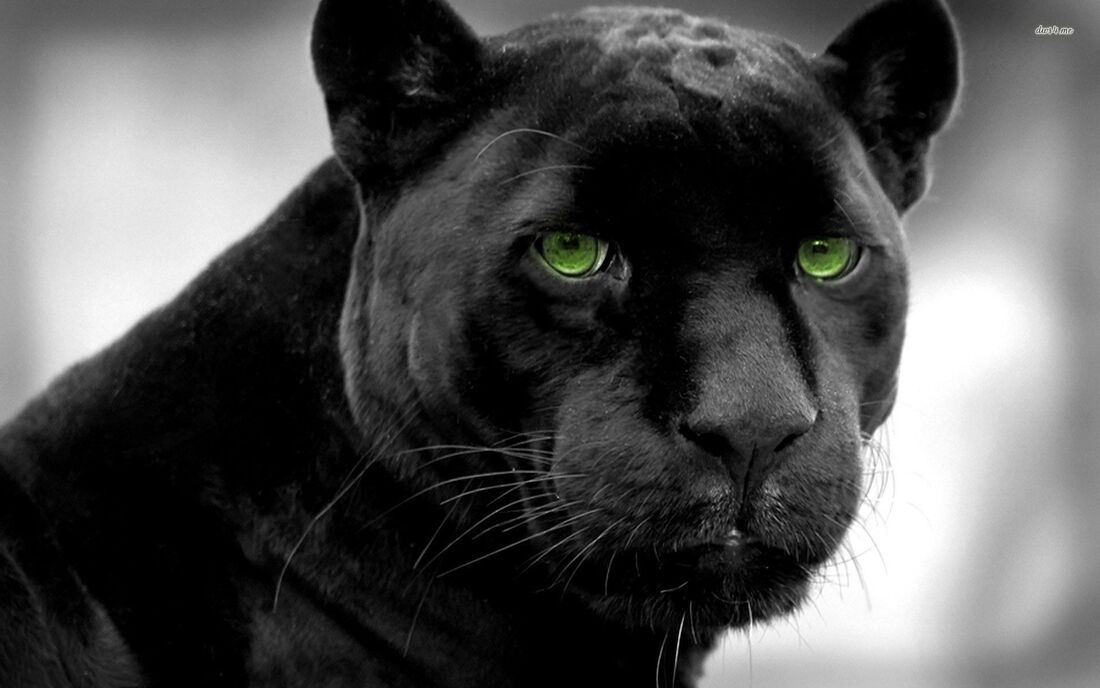
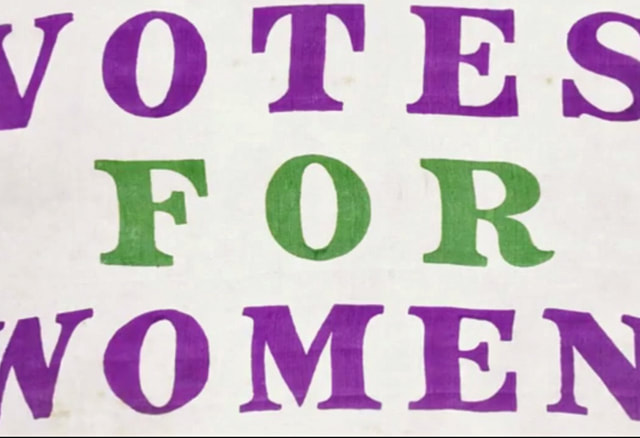



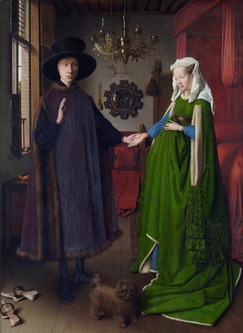

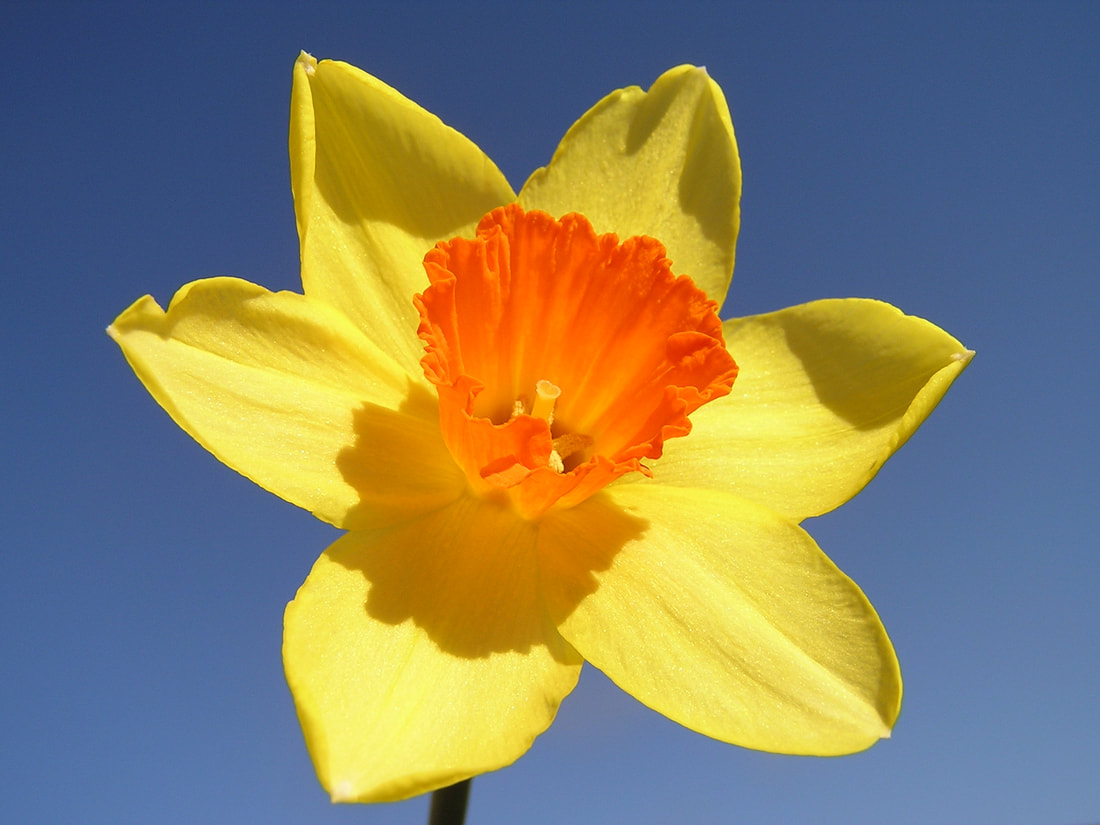
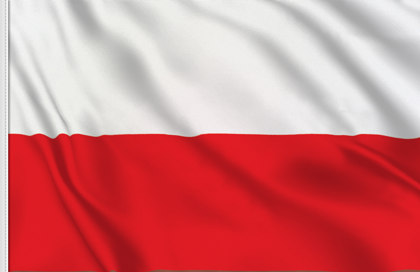
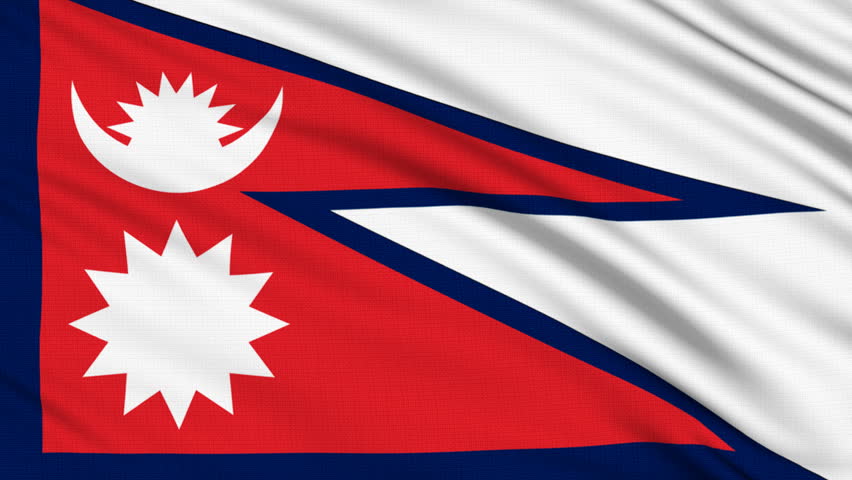

 RSS Feed
RSS Feed